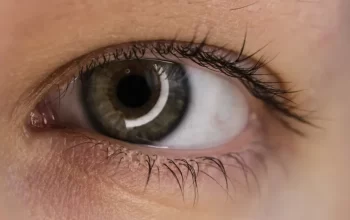Corns and calluses can be vexing, yet the body creates them to protect delicate skin. Corns and calluses are frequently mistaken for one another.Corns normally develop at pressure sites, commonly the soles and sides of the toes. They can be unpleasant.
A hard corn is a small area of dead, thicker skin containing a central core. A soft corn has a significantly thinner surface and typically develops between the fourth and fifth toes. A seed corn is a tiny, distinct callus that can be quite sensitive if it is located on a weight-bearing portion of the foot. Some physicians believe that clogged sweat ducts are responsible for the development of seed corns on the soles of the feet.
Calluses are non-painful thickenings of the skin’s outermost layer. They can form everywhere there is frequent friction, including the chin of a violinist. Similar to corns, calluses come in various forms. The common callus is typically caused by excessive rubbing of the hands or feet. A plantar callus is located on the foot’s sole.
Ouch,that really hurt!
Corns and calluses can be painful or not. Some corns and calluses are not uncomfortable at first but become painful as they thicken over time. Raised regions of skin, particularly corns, can be delicate or sensitive to touch or pressure. Calluses are less sensitive to touch than the skin around them. Cracks (called fissures) can emerge in a callus. Fissures can be excruciatingly unpleasant. If a corn or callus becomes infected, you will most likely experience pain or discomfort.
Who is more prone to developing corns or calluses?
If you have the following conditions, you are more likely to acquire corns or calluses:
- You already have medical issues that alter the usual alignment of your foot bones. For example, may suffer from foot arthritis, bunions, bone spurs, or hammertoes.
- You go around without socks.
- You’re wearing shoes that are too small for your feet.
- You are a smoker.
What causes corns and calluses?
Corns and calluses form on the skin as a result of frequent friction, rubbing, irritation, and pressure. Corns and calluses usually develop on the bony or prominent parts of the feet. They (most likely calluses) grow on the hands in locations where there is constant rubbing against the skin.
Corns and calluses are hardened layers of skin that your body employs to protect the underlying skin from discomfort and pressure.
Important point :
If you have diabetes, heart disease, or circulation issues, you should not attempt to treat corns and calluses on your own.
These disorders can exacerbate foot problems. Consult a general practitioner or foot expert.
Should I use over-the-counter medications for my corns and calluses?
Corns and calluses are eliminated with the harsh chemicals included in over-the-counter products. On occasion, though, the active components included in over-the-counter medications can cause serious health complications. In addition, if you have diabetes, you should avoid treating yourself. Your physician should assess any foot complications associated with diabetes. This is due to the fact that your doctor knows you better.
When do you seek medical help?
If you have extremely painful corn, diabetes, delicate skin, or peripheral artery disease, you should see a doctor before attempting home treatment. Seek medical assistance if your corn develops signs of infection, such as:
- Increased pain
- Pus, or drainage
- Swelling
- Redness
Relieving Pain. Restoring Function.
Dermatologists recommend the following treatments for corns and calluses:
1.Warm water should be used to soak the corn or callus.Do this for 5–10 minutes, or until the skin softens.
2.Using a pumice stone, file the corn or callus.After soaking the pumice stone in warm water, use it to gently file the corn or callus. To remove dead skin, use circular or sideways motions.
3.Take cautious not to remove too much skin.This could result in bleeding and infection.
4.Apply a moisturising lotion or cream to the affected area on a daily basis.Look for a moisturiser that contains salicylic acid, ammonium lactate, or urea. These substances will help soften hard corns and calluses gradually.
5.Make use of padding.Cut a piece of moleskin – available at your local drugstore – into two half-moon shapes and wrap them around the callus to shield it from further aggravation during activity. To keep a corn from rubbing against your shoe, wrap it in donut-shaped adhesive pads, which are also available in pharmacy.
6.Wear shoes that fit properly.A shoe that isn’t the proper size and form for your foot is a common source of corns. Shop for shoes in the end of the day, when your feet may be slightly swollen, to ensure a proper fit. In addition, have a clerk measure your feet and select shoes that aren’t too big or too small.
7.Maintain proper toenail care.Too-long toenails can cause your toes to push up against your shoe, causing a corn to form over time. Keep your toes clipped to relieve pressure.
Most corns and calluses fade over time as the friction or pressure that caused them ceases. However, if you are unsure about what is causing your corn or callus, if the hardened skin is really painful, or if you have any chronic health problems, please consult a doctor.




